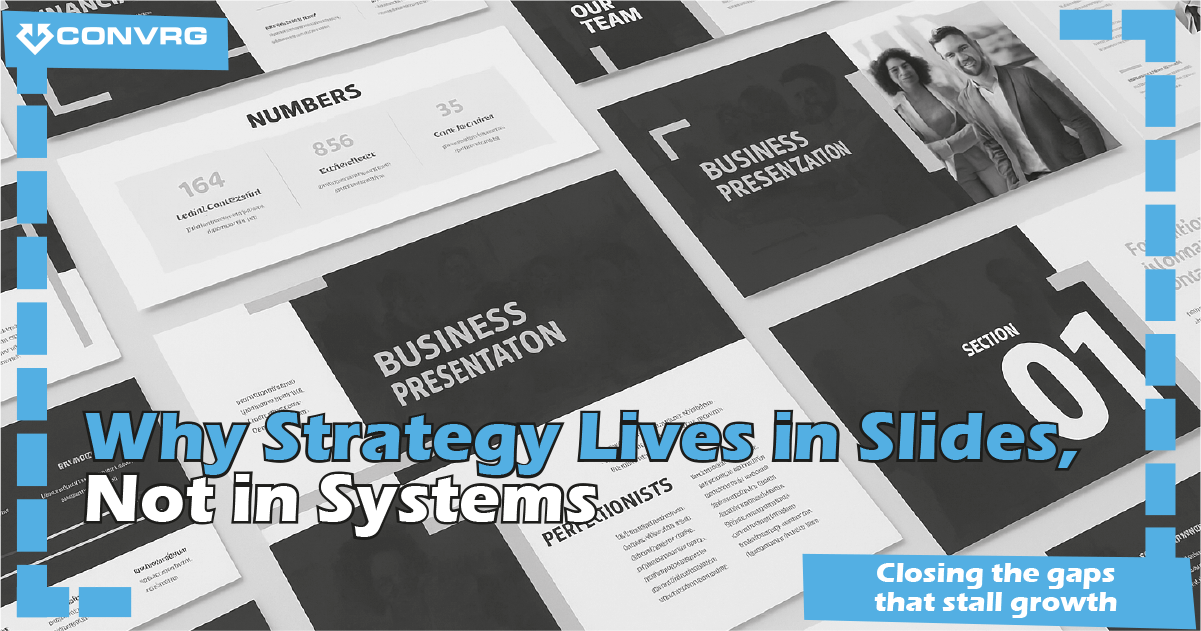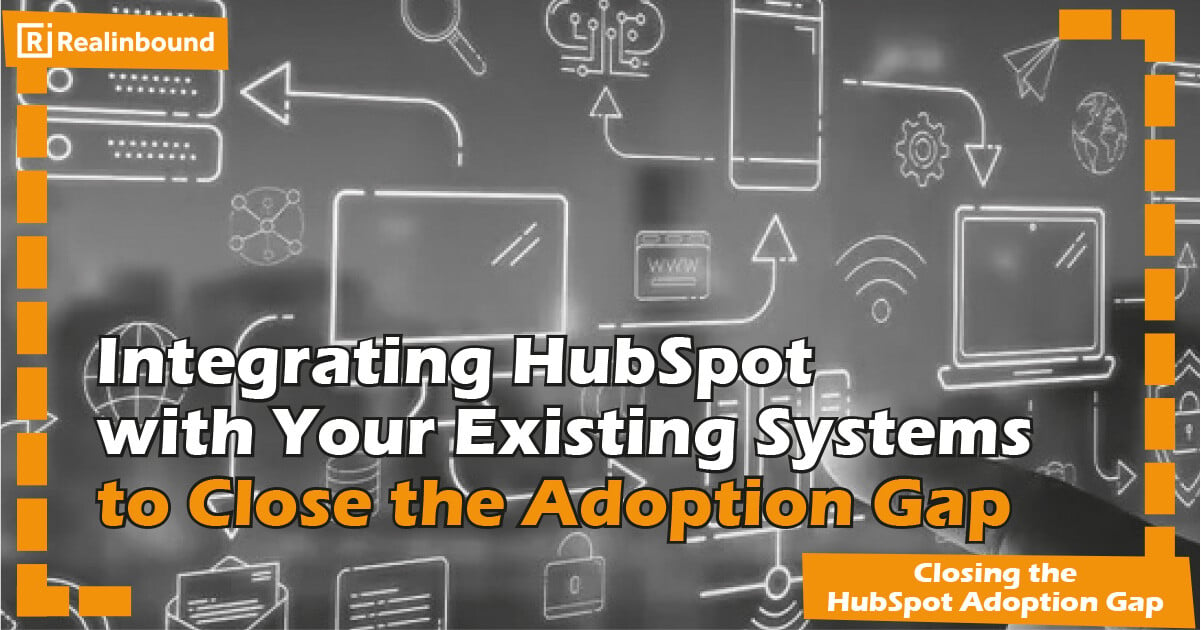Introduction: The Disconnect Between Vision and Execution
I’ve lost count of the number of times I’ve been called into a scaling business where the leadership team proudly show us their growth plan.
They bring out a beautifully designed strategy deck: big goals, bold vision, ambitious targets. It’s clear a lot of thought and energy went into it.
And yet, three months later, nothing has changed.
Sales are chasing the same deals they always have. Marketing campaigns don’t reflect new priorities. HubSpot is still configured around the old world. Dashboards measure activity, not strategic progress.
This is the hidden cost of strategy that lives in slides but never makes it into systems.
In this article, we’ll unpack:
- Why strategy fails to connect with execution
- How HubSpot gets left behind
- The consequences of this misalignment
- A framework for embedding strategy into systems
- Real-world examples of how scaling companies fixed it
Part 1: Why Strategy Fails in Scaling Businesses
1.1 The Strategy Deck Mirage
Strategy workshops are energising. Everyone leaves aligned on the vision. Growth feels inevitable.
But if your systems and processes don’t evolve with the plan, you’re relying on hope, not operational reality.
We often see:
- Decks shared once, then forgotten
- Targets set without rethinking delivery models
- HubSpot pipelines left untouched despite new market priorities
1.2 The “Business-as-Usual” Default
People revert to habits quickly. If HubSpot doesn’t reflect the new strategy, teams continue operating the way they always have.
Sales chase easy deals, not strategic accounts. Marketing measure MQL volume, not quality. Service deliver what they can, rather than what leadership expect.
In short: old systems create old behaviours.
1.3 Disconnect Between Vision and Tools
Leaders think about outcomes, but teams live in tools. If HubSpot pipelines, dashboards, and processes aren’t aligned with strategy, execution fragments.
This isn’t a technology gap. It’s an integration gap between leadership vision and operational systems.
Part 2: The Cost of Strategy That Lives in Slides
Ignoring this misalignment carries real consequences:
2.1 Missed Targets
Without embedding strategy into systems, teams don’t change behaviour. Goals stay aspirational rather than actionable.
2.2 Wasted Marketing Spend
If Marketing is optimising for lead volume but strategy demands fewer, higher-quality accounts, money gets burned on irrelevant campaigns.
2.3 Leadership Blind Spots
When dashboards aren’t rebuilt around strategic outcomes, leaders fly blind. The numbers they see are disconnected from the goals they’ve set.
Example:
We worked with a SaaS business targeting enterprise accounts for growth. Their dashboards still measured total leads generated. Conversion looked “healthy” - but enterprise contribution was near zero.
2.4 Team Friction
When strategy isn’t operationalised, Marketing, Sales, and Service lose alignment. Departments argue over priorities, and execution slows.
Part 3: Why HubSpot Gets Left Behind
HubSpot is often configured during implementation, then forgotten.
Pipelines, dashboards, and automations are frozen in time. But strategy evolves constantly.
Without deliberate updates:
- Pipelines reflect “how we used to sell”
- Dashboards report irrelevant KPIs
- Automations create noise instead of value
The result? Teams feel disconnected from strategy, and adoption falters.
Part 4: Embedding Strategy Into HubSpot
Your CRM should be more than a reporting tool. It should be the operating system for growth - the place where strategy comes to life every day.
Here’s how to make that happen:
Step 1: Translate Strategy into Processes
Start by identifying the outcomes you want, then map processes to deliver them.
Example:
- Targeting enterprise accounts? Redesign lead qualification to focus on high-value prospects.
- Moving to product-led growth? Shift lifecycle stages to reflect free-to-paid conversion journeys.
Step 2: Redesign Pipelines Around Strategic Segments
Pipelines should match your growth focus. If your strategy pivots to enterprise, your stages, properties, and lifecycle statuses must follow suit.
This isn’t cosmetic - it’s about creating a system that drives the right behaviours.
Step 3: Build Dashboards That Measure Outcomes
Dashboards are often the most underutilised part of HubSpot. Leaders need:
- Visibility into strategic KPIs, not just activity metrics
- Segmented reporting by target accounts or markets
- Forecasting tied to business priorities, not legacy stages
Step 4: Automate with Intent
Automation without purpose creates noise. Instead, design workflows that:
- Prioritise accounts aligned to strategy
- Trigger follow-ups when deals stall
- Alert leadership when key milestones are hit
Step 5: Lead from the Top
Systems don’t drive behaviour - leadership does.
If executives use HubSpot dashboards in every review, strategy lives in systems by default.
Part 5: The SIMPLIFI Framework
At CONVRG, we built SIMPLIFI to bridge the gap between slides and systems:
- Set the Scene: Define goals and align leadership
- Innovate: Reimagine processes for new priorities
- Map the Processes: Redesign pipelines and automation
- Plan the Way Forward: Build accountability into milestones
- Lead the Execution: Model the behaviours expected
- Implement the Systems: Configure HubSpot to reflect strategy
- Fix What Breaks: Resolve friction quickly
- Iterate Continuously: Keep tools aligned with evolving goals
SIMPLIFI operationalises growth. It ensures HubSpot reflects your business strategy today - and evolves as it changes.
Part 6: Case Study - Frontier Medical
Frontier’s leadership had ambitious growth goals but outdated systems. HubSpot pipelines didn’t reflect new markets. Dashboards tracked irrelevant metrics. Adoption was patchy at best.
Through SIMPLIFI, we:
- Redesigned pipelines for enterprise accounts
- Aligned lifecycle definitions across departments
- Built dashboards tied to strategic KPIs
- Coached leadership to embed HubSpot into weekly decision-making
Within two quarters:
- Qualified leads increased by 94%
- Attributable revenue grew 483%
- Leadership gained full visibility on progress
Part 7: The Leadership Mindset Shift
Embedding strategy isn’t about software. It’s about leadership.
Adoption succeeds when executives own the system, model usage, and make HubSpot the heartbeat of the business.
Leaders who delegate CRM ownership to Ops get dashboards nobody trusts. Leaders who drive adoption from the top create alignment, visibility, and predictable growth.
Conclusion and Next Steps
If your strategy still lives in slides, it’s not driving execution.
HubSpot should be the place where growth plans breathe - where every dashboard, pipeline, and automation reflects your priorities.
If it doesn’t, you don’t have an execution problem. You have a systems problem.
Next step: Download the SIMPLIFI Framework to see how to operationalise your strategy and turn slides into systems.






